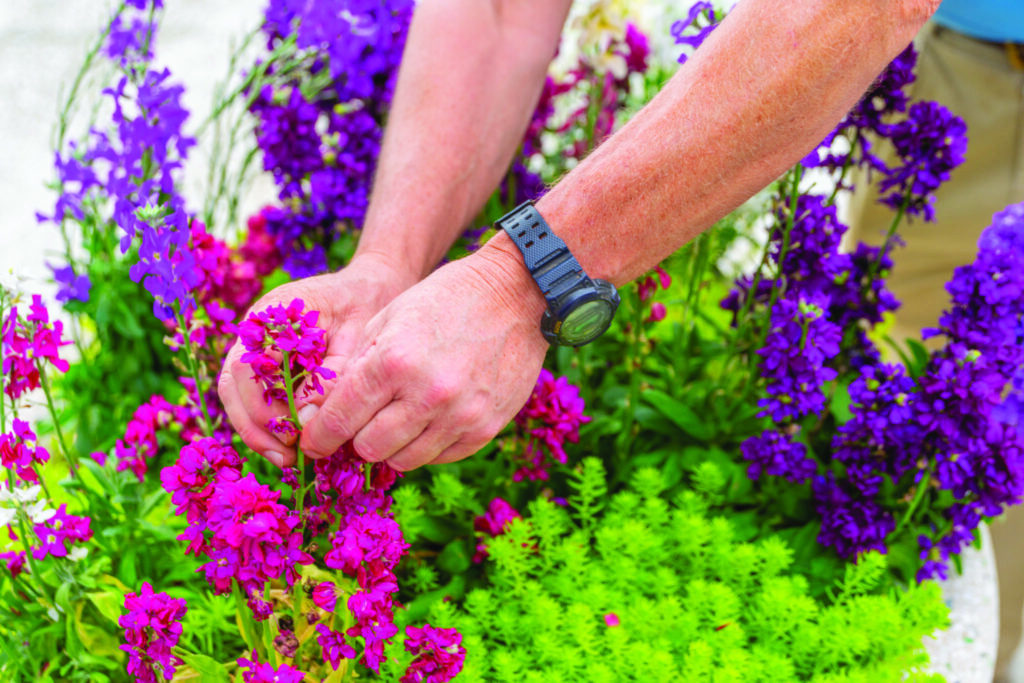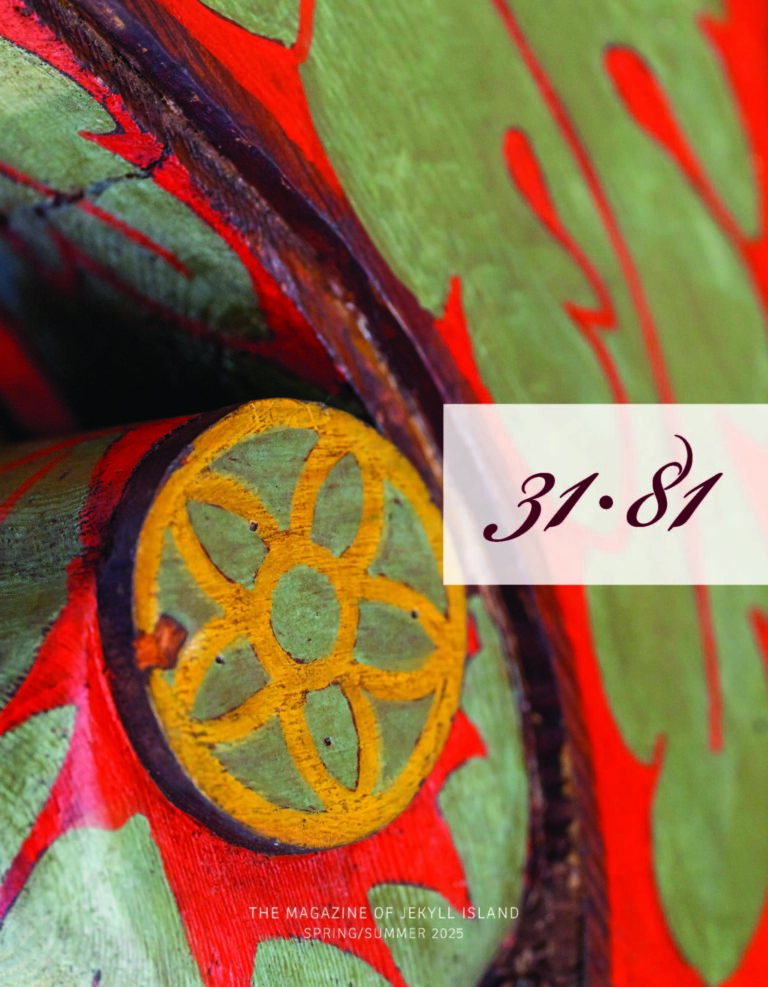Colorscapers design living masterpieces around the island.
BY TESS MALONE
For 30 years, Cliff Gawron has helped design the distinctive landscapes that place Jekyll Island among the most beautiful of the Golden Isles. When he first took a full-time job on the island, after finishing his master’s degree in landscape architecture at the University of Georgia, Gawron began designing seasonal landscapes, known as colorscapes, around Jekyll. Decades later, the colorscapes team has grown to five people.
While the designs are sometimes specific to Jekyll—a “G” for Georgia made of chrysanthemums, for example, for a Florida/Georgia golf tournament—Gawron draws inspiration from his travels, too. “I worked in Poland, I studied abroad in Italy, and I traveled by train through Europe,” says Gawron, now the Jekyll Island Authority’s director of landscaping and planning. “I’m constantly looking at things for inspiration, but it’s this kind of sickness where I only see what’s wrong. It takes a lot to impress me.”
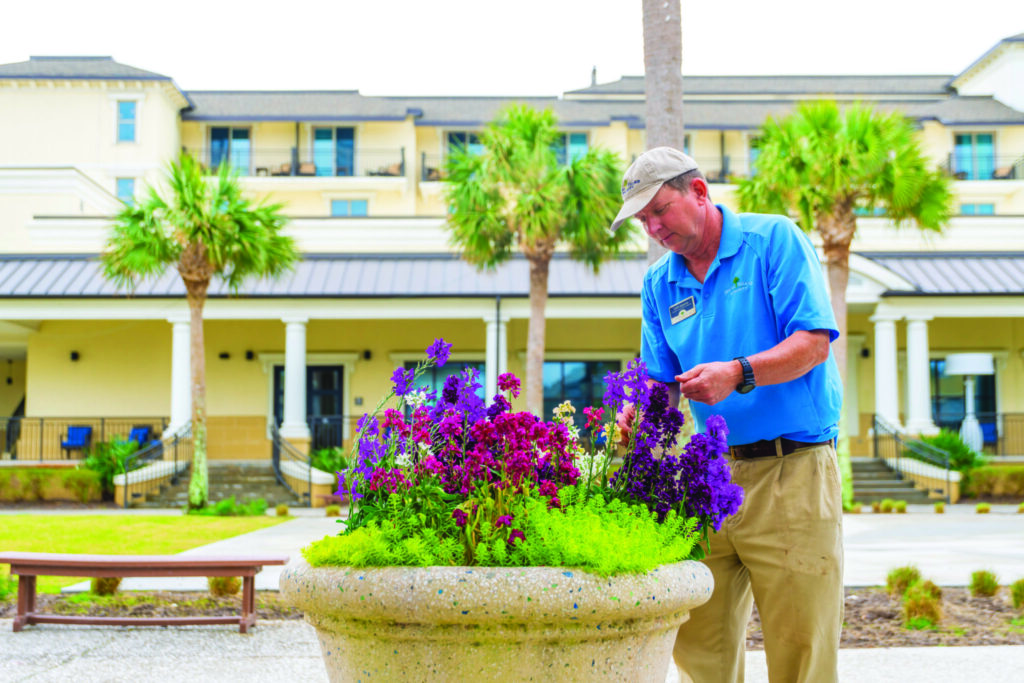
Colorscapes are an art, but making them is also a science that involves knowing all sorts of species of plants, how they grow, and picking ones that complement each other. There’s a rule-of-thumb aspect to the design, too. Each bed is broken down by thrillers, fillers, and spillers. Thrillers are the tallest, towering over the rest of the bed and inviting the eye in, like a snapdragon in a scarlet red or yellow. Fillers are the heart of the arrangement and medium in height—picture green cabbage or ornamental kale. Spillers take up the front as the shortest but spunkiest, like lavender or purple sweet alyssum.
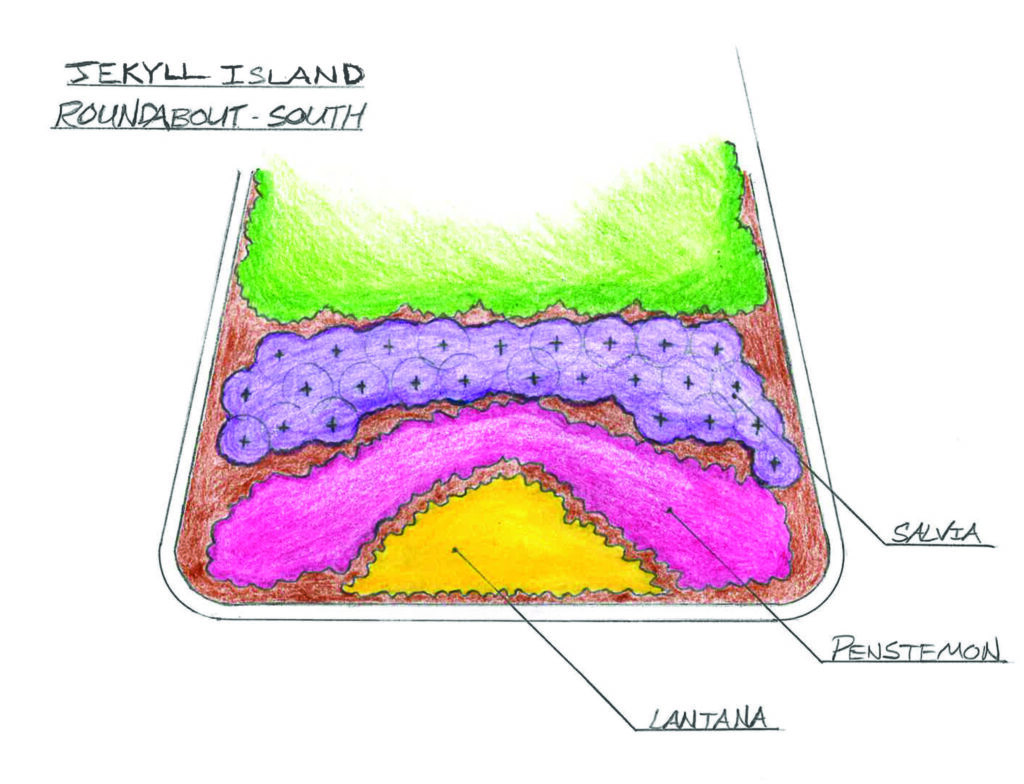
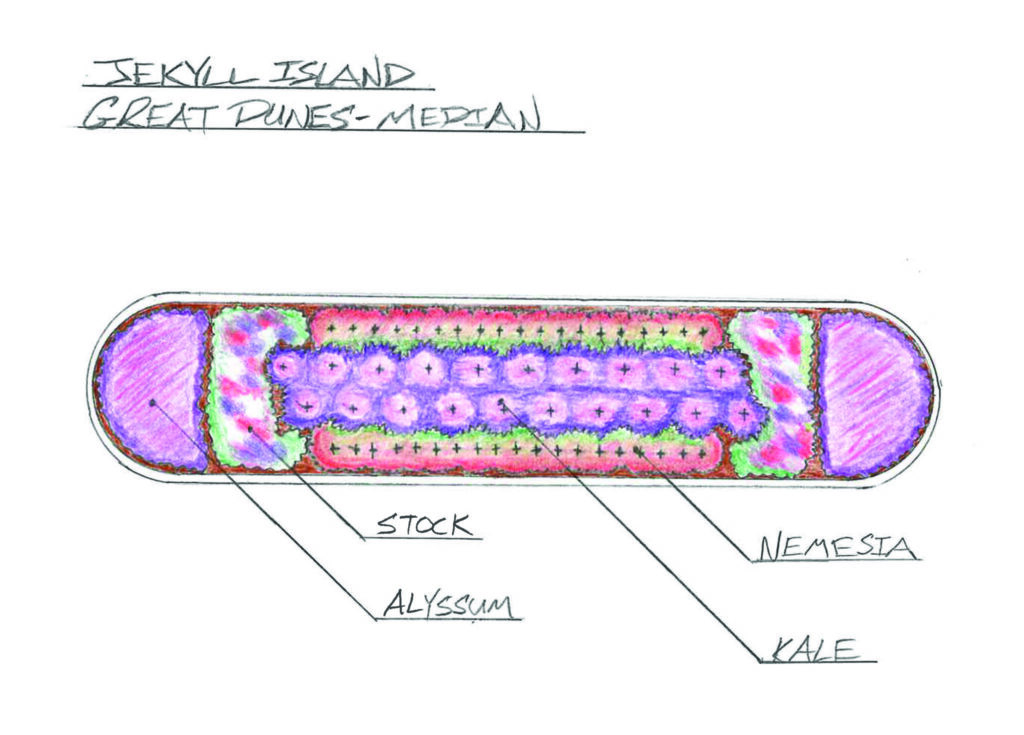
The same color wheel used in painting classes is useful in landscaping. Purple and yellow, orange and blue, and other complementary colors allow flowers to look their best. Like many gardeners, the team has tried-and-true favorites. (The color blue almost always makes an appearance.) All the hues are kept in check, as much as the heights. Particularly bright or warm colors are used sparingly. A well-balanced colorscape contains enough variety to keep the landscape lively and inviting, even if one plant fails or ails.
“We typically start by selecting a color scheme, but this is also an opportunity for creativity,” notes Brian Sheets, the JIA’s landscape operations superintendent. “Colorscapes are all about bringing the landscape to life with color, and we have many opportunities to enhance the landscape on Jekyll Island. This includes enriching natural areas with native plants, introducing bold colors in our retail village, and ensuring our Historic District landscapes align with its rich history.”
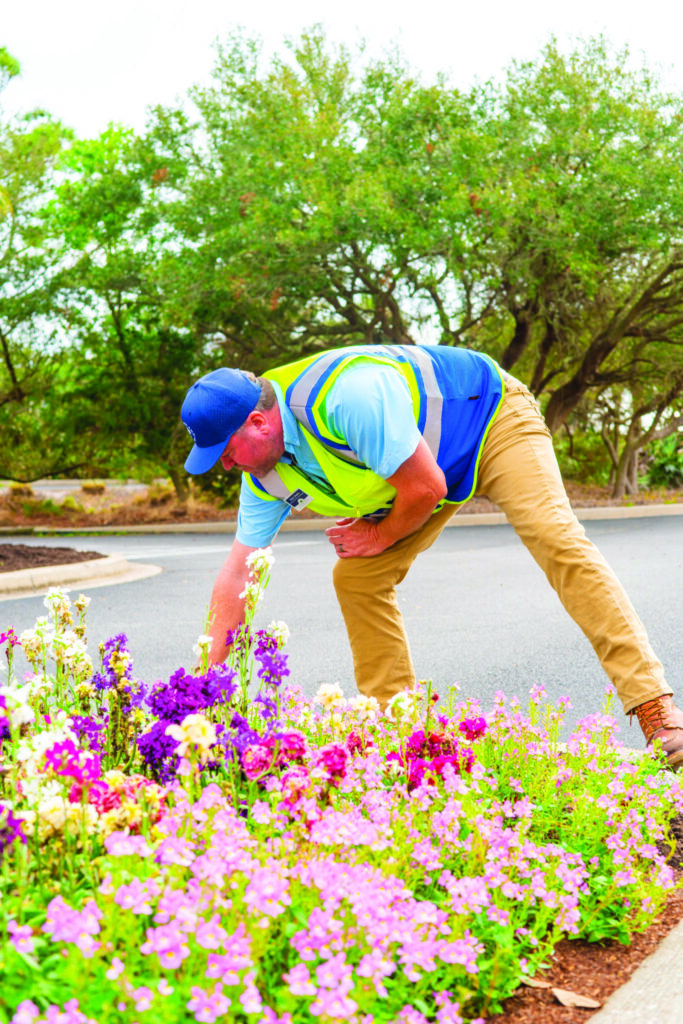
The colorscapes are updated every season, at a minimum, with some plantings in high-traffic areas refreshed more frequently to maintain their appearance. Each new plant begins in a greenhouse on the island before it makes its way to a colorscape. From there, success is up to several factors: island traffic, climate, and the presence of a landscaper’s nemesis—deer. Upkeep is critical, too. Each arrangement is checked daily to ensure that the blooms are always at their best.
Any cultivated plants not used in a colorscape are put up for sale, so visitors can take a little bit of Jekyll home with them. The Jekyll Island Greenhouse and retail nursery is located near the old Fire Station on Stable Road. It’s open Wednesday to Friday, 9 a.m. to 3 p.m.
